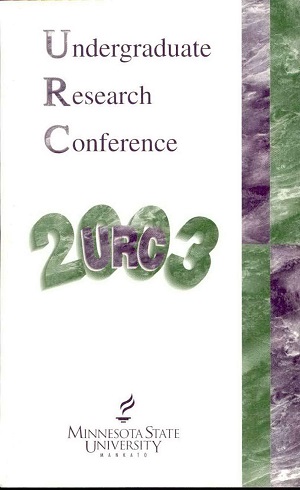A Paleoecological Examination of Temporal Trophic Changes Through Diatom Trend Analysis at High Island Lake, Sibley County, Minnesota
Location
CSU
Student's Major
Biological Sciences
Student's College
Science, Engineering and Technology
Mentor's Name
Bryce Hoppie
Mentor's Department
Chemistry and Geology
Mentor's College
Science, Engineering and Technology
Description
Lake restoration is a popular method of reclaiming and restoring eutrophic waters to a clearer, ecologically, and economically viable state. Establishing reasonable restoration goals relies upon accurately depicting a lake's past trophic evolution. With the current understanding of fossilized diatom ecology, it is possible to reconstruct a temporal trophic timeline, which can be correlated with phosphorus, chloride, and other indicators of water quality. These data can denote how a lake's natural and induced nutrient cycles influenced its trophic status prior to and after human development. Preliminary diatom fossil data compiled from High Island Lake, Sibley County, Minnesota identifies significant natural shifts in trophic status, as well as shifts from human disturbances to the lake and surrounding watershed.
A Paleoecological Examination of Temporal Trophic Changes Through Diatom Trend Analysis at High Island Lake, Sibley County, Minnesota
CSU
Lake restoration is a popular method of reclaiming and restoring eutrophic waters to a clearer, ecologically, and economically viable state. Establishing reasonable restoration goals relies upon accurately depicting a lake's past trophic evolution. With the current understanding of fossilized diatom ecology, it is possible to reconstruct a temporal trophic timeline, which can be correlated with phosphorus, chloride, and other indicators of water quality. These data can denote how a lake's natural and induced nutrient cycles influenced its trophic status prior to and after human development. Preliminary diatom fossil data compiled from High Island Lake, Sibley County, Minnesota identifies significant natural shifts in trophic status, as well as shifts from human disturbances to the lake and surrounding watershed.



